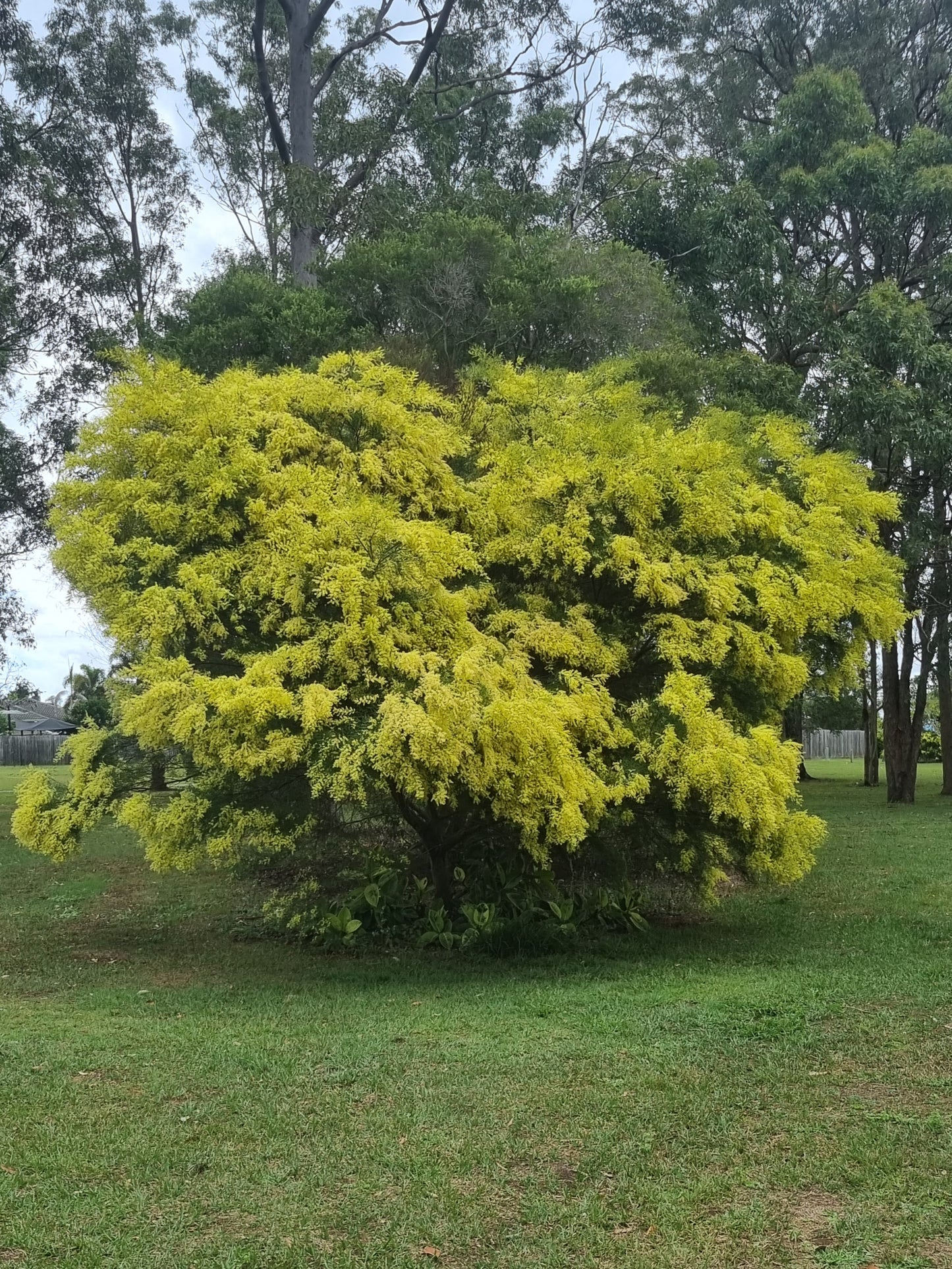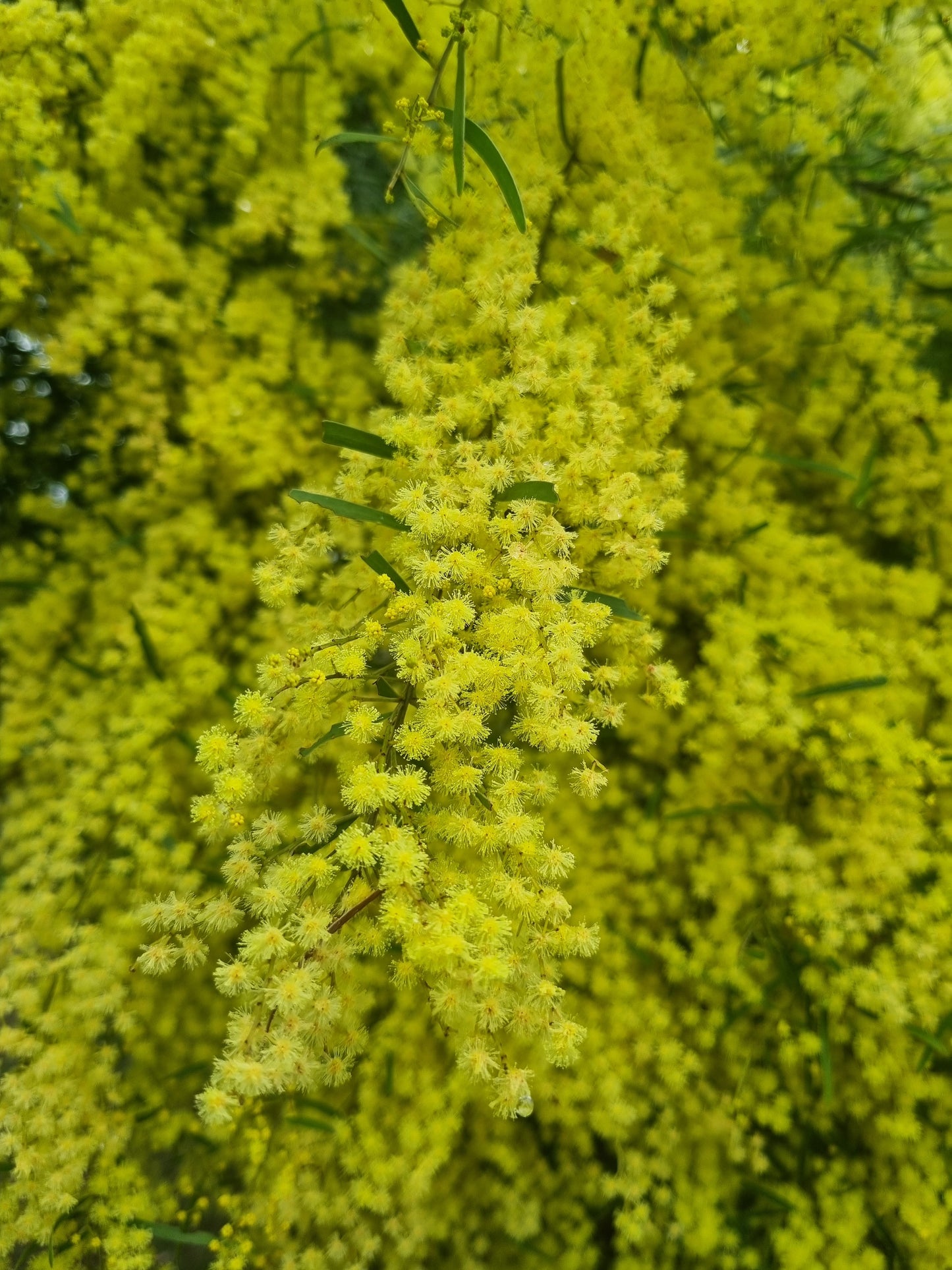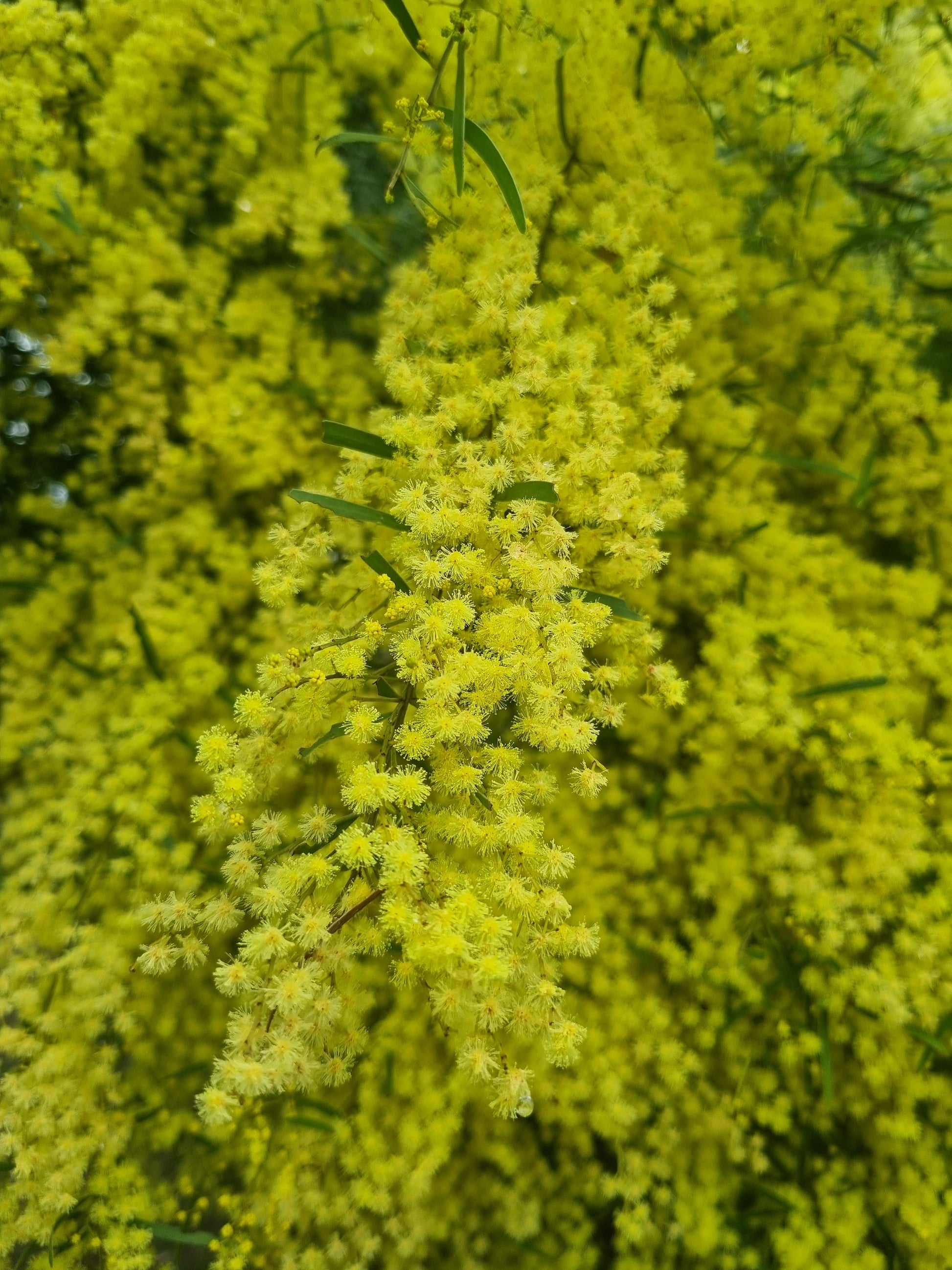Delivertree
Brisbane Golden Wattle – Acacia fimbriata
Brisbane Golden Wattle – Acacia fimbriata
Couldn't load pickup availability
The Brisbane Golden Wattle is a fast-growing, evergreen shrub to small tree with graceful, arching foliage and a spectacular display of golden-yellow flowers in late winter to early spring. Native to eastern Australia, it is well-suited to a wide range of climates and is often used for hedging, screening, revegetation, and attracting pollinators. Its fine, feathery foliage and profuse flowering make it both ornamental and ecologically valuable.
Quick Overview:
- Common Name: Brisbane Wattle
- Botanical Name: Acacia fimbriata
- Origin: Eastern Australia – from central New South Wales to southern Queensland
- Height & Width: 4–7 m high × 2–4 m wide
- Foliage: Fine, narrow, green phyllodes with a soft, feathery appearance
- Flowers: Bright yellow, ball-shaped flowers in dense clusters from late winter to early spring
- Wildlife Attraction: Loved by native bees, butterflies, and small birds
- Position: Full sun to part shade
- Soil: Adaptable to most well-drained soils; tolerates clay, loam, and sandy types
- Tolerance: Drought-hardy, light frost tolerant, and fire-retardant
- Maintenance: Low; fast-growing and responds well to pruning
- Etymology: Acacia comes from the Greek akakia, meaning “not evil” or “innocent,” likely referring to the plant’s ancient medicinal or protective qualities. Fimbriata is Latin for “fringed,” describing the fine, fringed edges of the plant’s phyllodes (leaf-like structures).
Detailed Description:
Brisbane Wattle is a soft-textured, adaptable plant that shines in native gardens, rural landscapes, and urban green belts. Its upright and bushy habit makes it ideal for screening, windbreaks, or creating a soft backdrop for other native species. In late winter and spring, the plant is smothered in fragrant golden blooms, making it a valuable early-season food source for pollinators.
This acacia is also a popular choice for revegetation projects and erosion control thanks to its fast growth and soil-binding roots. It thrives with little effort in both coastal and inland areas and can be lightly pruned to maintain a dense shape or trimmed into a hedge. Once established, it requires very little water and can tolerate poor soils, making it a highly practical plant for both gardens and restoration work.
Growth and Maintenance:
- Watering: Water regularly during establishment (first 6–12 months). Once established, it becomes drought-hardy
- Fertilising: Apply a native fertiliser in early spring to support flowering and healthy foliage
- Mulching: Mulch around the base to retain moisture, regulate temperature, and reduce weeds
Pruning:
- Responds well to pruning after flowering to encourage bushiness and maintain shape
- Can be pruned into a hedge or allowed to grow naturally into a small tree
- Remove dead or leggy branches as needed to improve airflow and structure
Common Uses:
- Fast-growing hedge or privacy screen
- Feature plant in native or wildlife gardens
- Pollinator-attracting shrub for early spring nectar
- Land rehabilitation, erosion control, and windbreaks
- Fire-retardant buffer planting in rural areas
Planting Benefits:
- Fast & Reliable: Quick to establish and cover ground, making it ideal for new gardens
- Floral Impact: Bright yellow ball flowers create a standout seasonal display
- Wildlife Friendly: Provides food and shelter for beneficial insects and small birds
- Low Maintenance: Grows with minimal care in a wide range of conditions
Share




